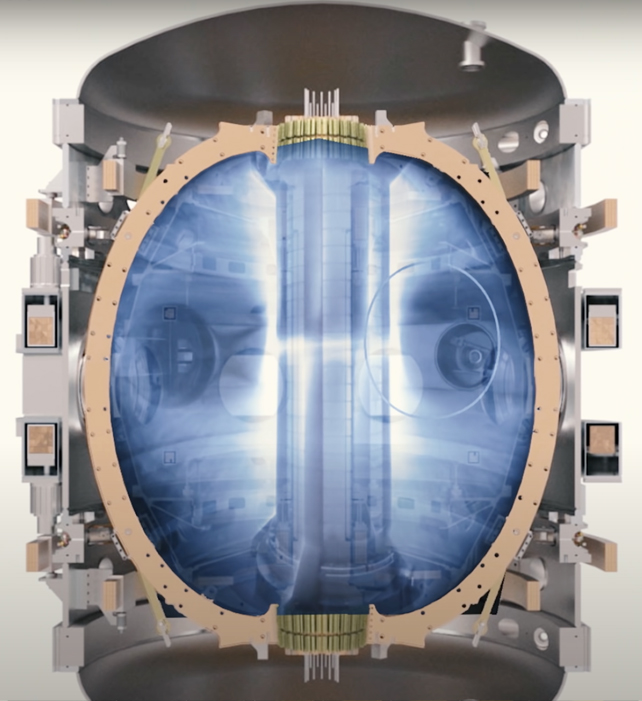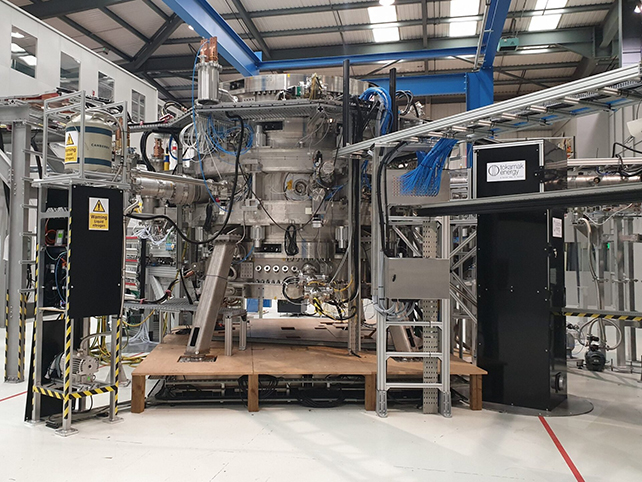Nuclear fusion: the one meter diameter mini tokamak reaches 100 million degrees. Is the future modular?

The ions inside a compact fusion reactor just a meter in diameter have been heated to a magical 100 million degrees Celsius for the first time, in a monumental step towards the practical realization of nuclear fusion energy.
Researchers from Tokamak Energy Ltd in the UK, Princeton and Oak Ridge National Laboratory in the US, and the Institute for Energy and Climate Research in Germany have broken records on a spherical tokamak device (ST), which, unlike the "doughnut"-shaped circular paths of heated fuel in larger reactors, confines the plasma in an "apple-shaped" vortex intended to improve the stability and practicality of power generation.

Nuclear fusion mimics fundamental processes in the core of our Sun and similar stars, squeezing energy from the fusion of smaller elements into larger ones. If we get it right – and that's a pretty big “if” – it means a virtually inexhaustible source of clean energy, with no harmful emissions.
While stars have massive amounts of gravity at their disposal to fuse elements and release energy, we are forced to rely on heat. A lot of heat, in fact, equivalent to several times hotter than the core of the Sun.
Cooking atomic ingredients, or ions, to at least 100 million degrees Celsius (essentially anything above 100 million degrees Kelvin, or 8.6 kiloelectron volts in energy terms) is critical to getting the right pressures.
“Ion temperatures above 5 keV [kiloelectron volts] have not previously been achieved in any ST and have only been achieved in much larger devices with substantially greater plasma heating power,” the researchers write in the published paper.
In this case a spherical tokamak called ST40 was used. Aside from the machinery required for its safe operation, the reactor itself is only 0.8 meters in size, a fraction of the larger tokamaks which can reach several meters in diameter.
Compared to larger fusion reactors, these smaller devices are cheaper to build and potentially more efficient and stable – all advantages if you want to make a technology commercially viable.
To achieve the new temperature record, the researchers employed a number of optimizations, including the use of the ST itself and the way the plasma was prepared in terms of heating and electron density.
Some techniques were borrowed from the 'supershot' experiments conducted in the 1990s in the Tokamak fusion test reactor, much larger than the ST40. Essentially, the approach involved applying a lot of heat in a very short amount of time.
Another optimization trick applied by the scientists was to heat the positively charged ions more than the negatively charged electrons within the plasma. This mode, known as hot ion mode, helps to increase the number of reactions and the performance of the tokamak.
“These temperatures were achieved under hot-ion mode scenarios, where the temperature of the ions exceeds that of the electrons, typically by a factor of two or more,” the researchers write.
While this discovery and others like it are certainly exciting, nuclear fusion is still in the experimental stages, with several hurdles to overcome before it can be considered a practical energy source. Not everyone believes that nuclear fusion power generation will be possible, given the technical challenges ahead.
These challenges are highlighted here as well: the maximum temperature was reached for just 150 milliseconds. An excellent result in the laboratory, but not much time to contribute concretely to the energy grid.
However, each discovery brings us closer to the ultimate goal – and this one is particularly noteworthy, considering that spherical tokamaks are one of the most promising options for creating nuclear fusion reactions so that the necessary energy and economic equations end up making sense.
“These results demonstrate for the first time that ion temperatures relevant for commercial magnetic confinement fusion can be achieved in a compact high-field ST and bode well for fusion power plants based on this type of ST,” write the researchers. researchers.

Thanks to our Telegram channel you can stay updated on the publication of new articles from Economic Scenarios.
The article Nuclear fusion: the one meter diameter mini tokamak reaches 100 million degrees. Is the future modular? comes from Economic Scenarios .
This is a machine translation of a post published on Scenari Economici at the URL https://scenarieconomici.it/fusione-nucleare-il-mini-tokamak-di-un-metro-di-diametro-raggiunge-i-100-milioni-di-gradi-il-futuro-e-modulare/ on Thu, 01 Jun 2023 20:14:42 +0000.

